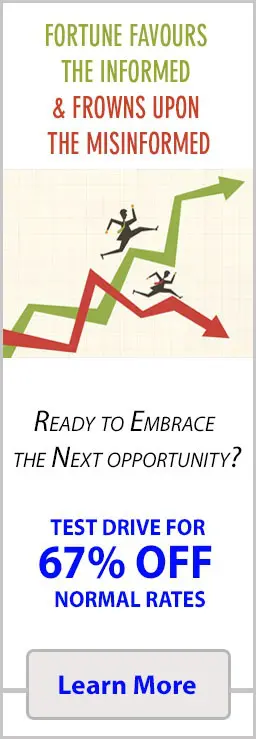Analysis of Trends: Spot Patterns, Crack the Code
Nov 2, 2025
In the relentless battlefield of financial markets, clinging to conventional wisdom is a recipe for obscurity—or worse, disaster. Investors have been seduced by the allure of mechanical systems in Technical Analysis and the perceived stability of Fundamental Analysis, believing these methods to be the keys to success. Yet, no matter how meticulously one searches within these frameworks, the truth remains elusive if the premise is flawed.
Bounded by inflexible rules, Mainstream Technical Analysis offers little more than an illusion of control—much like Fundamental Analysis, which peddles standardised data, leading the masses to the same uninspired conclusions. The markets are not tamed by conformity; they are conquered by those who dare to see what others overlook. Standardisation is the antithesis of innovation, and rigidity is a liability in the ever-shifting landscape of finance.
The crowd’s comfort is a siren’s song, beckoning with the false promise of safety in numbers. Yet in the volatile markets, such safety is a mirage. Actual peril lies in embracing the mass mindset, where caution masquerades as wisdom and collective ignorance amplifies risk. To prevail, one must break free from the herd, think independently, and navigate the markets with audacity and finesse.
Trading Language: The Obfuscation of Complexity
Finance loves its masks.
It dresses manipulation in metaphors and ignorance in prestige. The trading floor still echoes with words that belong in a medieval tavern—bulls, bears, plunges, rallies—animal noise pretending to be knowledge. These terms are fossils of an age when speculation was a blood sport, not a system. They reduce human complexity to zoology, as if the market were nature, not psychology.
Language shapes cognition, and in trading, language has become a weapon. “Scalping,” “upthrust,” “climactic sell-off”—each term performs two functions: to signal expertise and to obscure accountability. The trader who loses money to “volatility” blames the market’s temperament, not his own illusion. That’s the brilliance of jargon—it transfers agency from human choice to cosmic accident.
The 2008 crisis was not merely a collapse of leverage but of language. “Collateralised debt obligation” sounds sophisticated; “bundled garbage sold as security” does not. “Credit default swap” sounds like a tool; “legalised insurance fraud” sounds like the truth. Words became camouflage. Analysts didn’t lie; they mislabeled. Complexity became the moat protecting incompetence. When regulators demanded clarity, the industry responded with thicker fog—tranches, hedges, synthetic exposures—linguistic armour polished to a mirror shine.
Jargon is not communication; it’s architecture. Its purpose is not to describe but to defend. It builds hierarchy: insiders fluent in the dialect sit at the table, outsiders remain spectators. Every obfuscation earns its architect more power. The rest of us pay in confusion and fees.
If markets are conversations of capital, then the first revolution must be linguistic. Strip the metaphors. Translate the Latin. Replace “leverage” with “debt on debt.” Replace “hedge” with “fear management.” Replace “liquidity event” with “panic in slow motion.” The truth becomes obvious when the disguise dissolves.
The irony: markets punish opacity in pricing yet reward it in language. A system that claims to love transparency communicates like a priesthood. Until we reclaim vocabulary, we’ll keep mistaking complexity for intelligence and arrogance for insight.
The Herd Mentality: Blind Allegiance in the Markets
The market’s most dangerous indicator isn’t a chart—it’s applause. The crowd cheers before every collapse. That’s the rhythm of mass psychology: unity before implosion.
The herd moves not because it believes, but because it’s afraid to be alone. In 1999, the dot-com bubble turned optimism into a narcotic. Companies with no profit, no plan, and a “.com” in their name traded like deities. Analysts invented new valuation metrics because the old ones ruined the party. When gravity returned, $5 trillion in paper faith evaporated. The lexicon changed, the psychology didn’t.
2008 replayed the same opera in a different key. Housing was the new internet; debt the new dopamine. Homebuyers, bankers, and investors—each one mistook momentum for safety. Every uptick fed serotonin’s illusion of calm; every mortgage approved expanded testosterone’s illusion of control. When the feedback loop broke, the crash was biochemical: ecstasy turned to nausea.
Even in 2020, during the pandemic freefall, the pattern repeated. The herd sold first, asked later. Fear was the only liquidity. Yet contrarians—those strange creatures who treat panic as signal, not noise—were already calculating asymmetry. While others drowned in data, they read emotion. They understood that markets, like bodies, heal from inflammation. The recovery began the moment hysteria peaked.
Defying the herd is not romantic; it’s arithmetic. When everyone believes the same story, the price already includes the belief. Contrarians profit not by cynicism but by timing human chemistry. They enter when cortisol rules and exit when dopamine overflows.
The real contrarianism now is intellectual, not positional. It’s refusing to accept the market’s vocabulary, refusing to worship the screens that dictate it. The crowd trades symbols; the contrarian trades psychology.
Break the language and you break the spell. Call mania “addiction.” Call correction “withdrawal.” The cycle reveals itself: stimulus, dependence, relapse, reform.
Markets are not machines; they are nervous systems made visible.
Learn their chemistry, not their slogans.
Then, when the herd runs again—as it always does—you won’t need to run.
You’ll already know where it ends.
Mastering Technical Analysis: Human Systems in a Mechanical Market
Mechanical trading systems promise salvation through code. They seduce with precision, discipline, and the illusion of immunity from emotion. Yet markets are not algorithms; they are mood rings worn by civilisations. The very belief that math can neutralise psychology is the market’s oldest delusion.
Algorithms obey; humans anticipate. A system can measure a trend, but it cannot feel its exhaustion. It cannot smell fear. Mechanical systems fail not because they are wrong but because they are soulless. They assume yesterday’s behaviour predicts tomorrow’s conviction. It never does.
Richard Wyckoff understood this a century ago. He built his framework not from equations but from observation—how price and volume revealed emotion in disguise. He taught traders to read intention in the tape, not merely pattern. His protégé in spirit, Jesse Livermore, waited for confirmation that could be felt as much as seen: the market’s breathing pattern before a move. When momentum aligns with mood, charts come alive. When they diverge, no system saves you.
Machiavelli would have admired such pragmatism. He warned that rigid order invites ruin; adaptability is survival. Markets are just politics with different currencies—the same hunger for control, the same fear of loss. The wise trader governs himself before he governs his trades.
Buffett’s aphorisms sound simple because they are distilled from blood. “Be fearful when others are greedy” is not a quote; it’s an operating system for contrarian instinct. Crowd euphoria is a tell of late-stage dopamine excess. When the herd feels invincible, the top is near. When the air thickens with despair, serotonin collapses and value returns.
Crowd behaviour, then, is not noise—it’s the signal. Technical analysis is merely a lens for emotional geometry. During mania, charts expand; during fear, they contract. Your job is not to follow the line but to sense its pulse. The best analysts don’t forecast; they listen.
Mechanical systems can’t. They choke on paradox. They interpret every breakout as birth and every breakdown as death, blind to context. A trader with judgment sees both as disguise. Most “AI-enhanced” models still make the same human mistake—they quantify everything except conviction.
The paradox deepens: emotion destroys amateurs but empowers professionals who understand it. Greed isn’t the enemy; unexamined greed is. Fear isn’t fatal; unacknowledged fear is. Livermore said it bluntly: “The game of speculation is the most uniformly fascinating in the world. But it is not a game for the stupid, the mentally lazy, or the emotionally unstable.”
Charts, correctly read, are anatomy. Each candle is a heartbeat; each reversal, an arrhythmia. Tools like the StochRSI and MACD—already decoded earlier—reappear here as diagnostic equipment, not prophecy. StochRSI detects emotional acceleration, the sudden lunge of belief. MACD measures inertia, the deep current of consensus. Together, they warn when momentum detaches from meaning. When both flatten while price climbs, it’s not stability—it’s euphoria ageing into fragility.
Adaptability, patience, and disciplined curiosity form the trader’s trinity.
- Adaptability: Markets evolve faster than ideology. What worked last year is bait today.
- Patience: The most profitable action is often inaction. Time filters noise.
- Discipline: Strategy is nothing without nerve. Fear disguises itself as prudence; greed as conviction. Know which voice is speaking.
Diversification isn’t just portfolio theory; it’s psychological hygiene. No single position should own your peace of mind. Divide risk as Machiavelli would divide armies—so no loss becomes fatal.
Conclusion — The Art Beneath the Algorithm
Mastery of technical analysis begins where mechanical trading ends: with intuition sharpened by data, not replaced by it. The charts speak, but only to those fluent in emotion. Crowd psychology remains the final frontier—irrational, recursive, sublime.
The trader who understands this no longer worships indicators; he interprets them as weather reports in a storm he can feel on his skin. He studies patterns not to predict but to adapt.
The future belongs to the hybrid mind—half analyst, half anthropologist—reading both the code and the crowd.
Trading isn’t a science or an art.
It’s language—written in volatility, spoken in courage.











